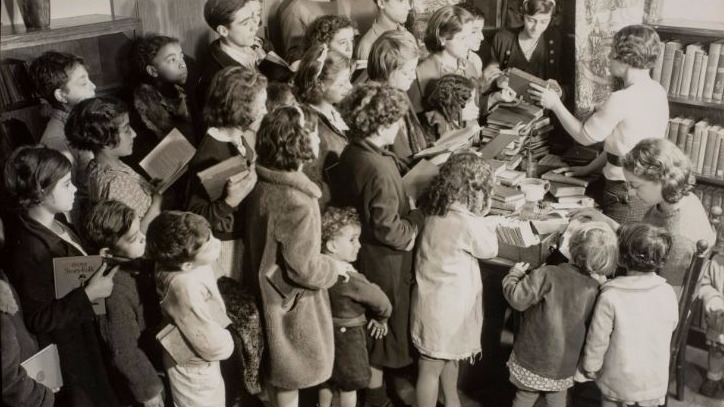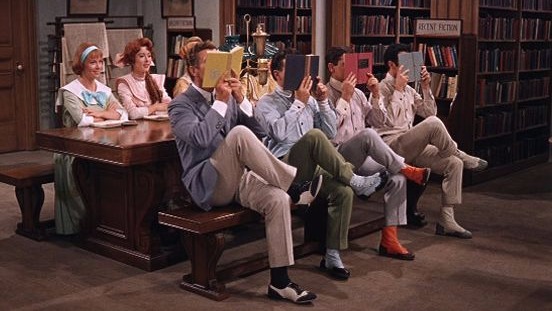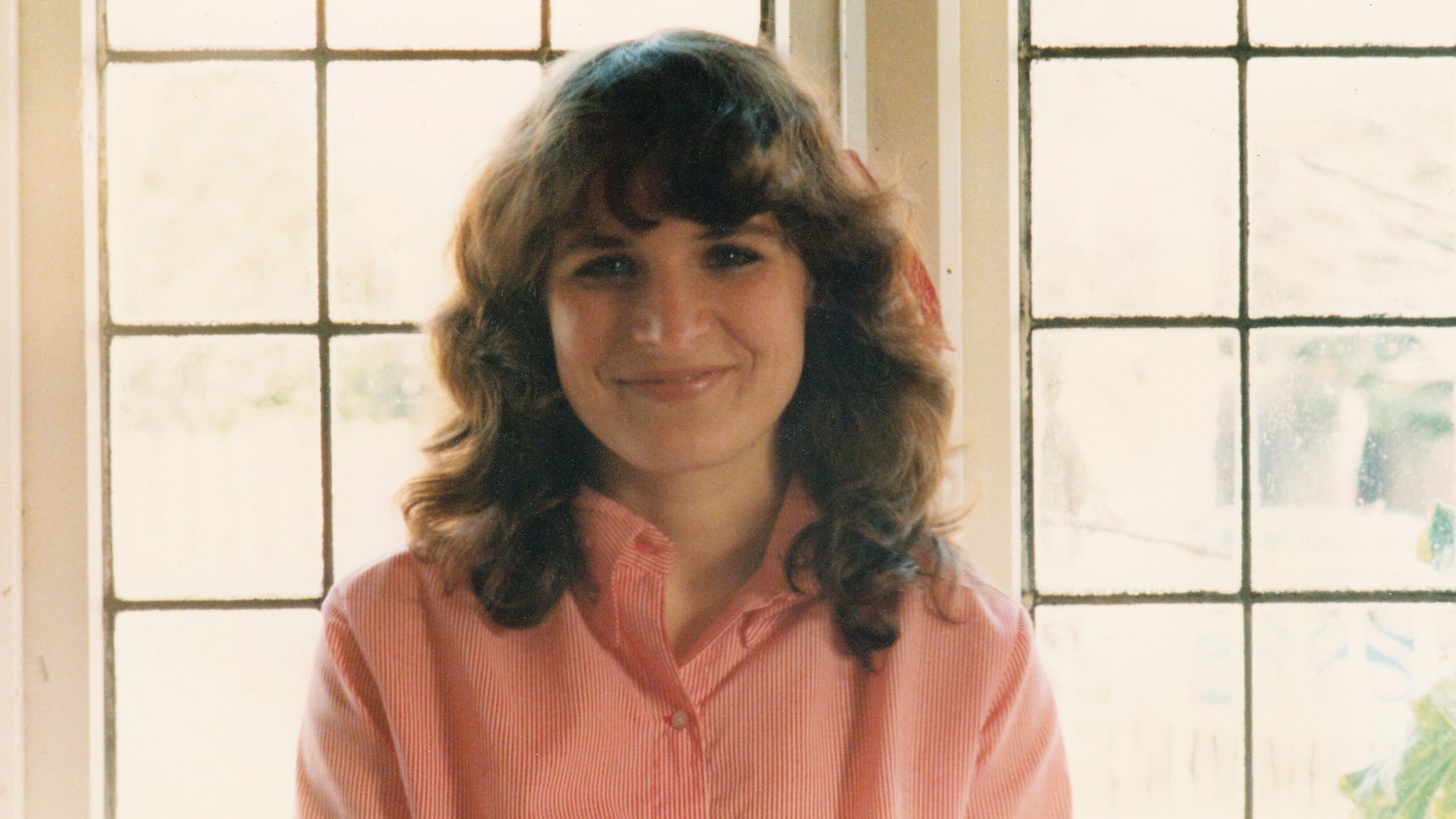Kate De Goldi confesses the pleasures of reading ‘off-task and off-curriculum’, and describes how necessary public libraries are to the development of a love of reading.

In my late teens and early twenties I worked as a library assistant in two Christchurch libraries – Redwood and Fendalton. They serviced quite different socio-economic catchments but both were heavily patronized and loved community hubs, flourishing under the leadership of the magnificent Dorothea Brown, a Dutch emigrant who later became Christchurch’s first female City Librarian.
It was through Dorothea and her team – in particular, my immediate boss, Adrian Birkbeck – that I came to appreciate, and be galvanised by, the radical dimensions of the public library, to understand it as a place of enormous possibility, the very definition of a benign enabler: an institution dedicated to making story, language and information available to all citizens, dedicated to the notion that access to information in all its forms empowers the individual and their community.
Dorothea herself put it this way: ‘What I loved about the public library idea and what I needed to come to New Zealand to learn was the concept of contributing to democracy and contributing to learning for everyone.’ A modest but profound statement. Being young, I saw it in vainglorious terms. Librarians, I once said earnestly (to an accountant), were – to paraphrase James K. Baxter – ‘cells of good living in a corrupt society’.
Librarians, I once said earnestly (to an accountant), were – to paraphrase James K. Baxter – ‘cells of good living in a corrupt society’.
Well, it’s mostly true. Librarians, like any sub-group, come in sundry guises, and I have certainly known ones who disliked all borrowers and were reluctant to see any of ‘their’ books ever leave the library. But libraries have always been sanctuaries for the misanthropic and bewildered and lonely – librarians and borrowers alike. School libraries are blessed havens for student oddballs or those who haven’t yet found their tribe.
In the seventh form, when I regularly skipped school and went instead to the Christchurch Public Library, it was mostly to read, partly to avoid school work, but also to find a kind of relief from life in among the stacks of books and the curious individuals dotted around the library rooms, reading, staring, sleeping.
The rule of silence was the norm in those days – as Herbert Hill, the The Music Man’s conman, sings to Marian Paroo, the town’s prim (!) librarian: ‘The civilized world accepts as unforgivable sin / Any talking out loud with any librarian.’ ‘Quiet, please!’ trills the chorus of borrowers in response…

But I liked the silence in the Reading Room of the Christchurch Public Library. It was made up of numerous small, comfortable sounds – coughs and sniffs and the dry turning of pages, the scrape of chairs, photocopier clicks and hums, the low murmur of the librarian assisting a borrower. Inside the deepening quiet, other senses were heightened. If I think of that silence now, it has a distinct smell – a mix of dust, mushroomy foxed pages, damp wool, the sharp scent of worn, polished wood when you lay your head on the desk for a quick nap. Occasionally now – particularly in an old library building – I am ambushed by that singular smell, and remember the old thrill of those stolen days and the new self, incubating amid the Reading Room shelves – a nascent intellect, off-task and off-curriculum, reading incontinently and ecstatically, looking for landmarks in the post-school world I would soon be ushered into.
I had been borrowing from the Library since I was very young. The terrific children’s fiction collection had built me – to borrow Francis Spufford’s term – as much as my own collection of children’s fiction, bought by my mother and doled out in bundles every Friday night, read and reread over a decade. Some time in my fifteenth year, my parents’ large collection of books had come suddenly into focus, too, and I’d read my way through their fiction (Galsworthy, Neville Shute, Dickens, Somerset Maugham, 19th century European novelists, detective and spy fiction, historical romances). The pleasures of story and heightened language were hard-wired. Apart from our Time Life history and science books, though, and a birthday present called Bits That Grow Big, a manual for young gardeners, I had barely knocked up against non-fiction. During the Reading Room sit-ins, I began exploring the adult library’s non-fiction collection, returning most often to the 200s and 300s (religion and social sciences) and the 800s and 900s (literature and history). There was no focus to this reading – it was random and instinctual, often suggested by a novel or a film or some interesting fact scooped up from the vast, featureless sea of 7th Form history texts: a book about Marat and Charlotte Corday (I’d read a Girl Annual story about a dashing French Revolutionary aristocrat); William Gaunt’s history of the English Aesthetic and Pre-Raphaelite movements (my father’s quotes from Oscar Wilde); a military history of the American Civil War (I had watched Gone With the Wind); the biography of Virginia Woolf by Quentin Bell (I’d seen a soulful photograph of Woolf); All the President’s Men; a book on gestalt therapy; a book of Marc Chagall’s paintings; a book about Hasidism…
The important thing, though, was that these library visits were unsanctioned and the reading unsupervised…
A very ’70s list, and Western-centric, and hardly straying from the co-ordinates of my middle-class life and formal education. Not so rebellious, really. The important thing, though, was that these library visits were unsanctioned and the reading unsupervised – not curated (however gently and well-intentioned) by any adult I knew. Later, I understood that all library collections are curated and represent the prevailing values of the community and culture within which they operate – but for me, then, a day sneaked from school, a sea of books provided by unknown hands, the austere surroundings, the pooling silence, the sentences sounding loud in my head, the new words piling up – it all amounted to a step across some crucial threshold, a move towards a new agency.

The next year at university – and disastrously – I continued this feckless and contrary approach to course requirements, and pursued an entirely alternative reading programme: Canadian fiction (there was a considerable collection in the university library); the complete Dorothy L. Sayers and Margery Allingham; Italian history and fiction; biographies of composers; American children’s fiction; American film history; and, for some reason, The Rise and Fall of the British Nanny by Jonathan Gathorne-Hardy, a title never forgotten, principally because I gobbled it up with a queasy mix of glee and dread instead of studying for my New Zealand history exam. I still feel a little sick when I think of it.
Mostly, I’m glad of that old willful, off-task reading habit, though its consequences were painful: epic failure and shame.
But in due course, the shame drove me from home and into the arms of … the Redwood Library, where I slowly learned the satisfactions of disciplined work and completed tasks – and became excited by the philosophy of public libraries. I began thinking about children’s literature in earnest, too – as distinct from merely reading it – thanks to the 808 shelves, beginning to place the writers and titles of my childhood in their wider literary historical context. I started to watch and listen to the children who came every afternoon – usually without parents – to take note of their reading and looking appetites, the books they reread, the way the library was for them, too, a comfortable alternative home, a place of infinite possibility, a treasure house of story and visual language; a place where they had a rare agency, drifting around the shelves unsupervised, peeping and scanning and deciding.
[…] the library was […] a comfortable alternative home, a place of infinite possibility, a treasure house of story and visual language…
I’ve thought a lot lately about the pleasures and virtues of an unsupervised, untrammeled, scattergun reading life – and the public library’s crucial role in that.
For the last 15 years or so, my reading has been heavily directed by the publications of the moment – for reviewing purposes, for chairing writers at festivals, for workshops, for writing – and also just because the wider literary conversation is generally preoccupied with the new. Notwithstanding the discernments I may make, my reading is being curated to a large degree by the fashions, agendas and business decisions of the global book economy and the mediums through which I seek out titles (bookshops, online booksellers, journals, blogs, podcasts, etc). That’s mostly fine, and particularly for the reading of adult books. There’s a complex global critical apparatus around that arm of publishing, no shortage of voices and varied literary tastes. If you read and listen to a wide enough range of book commentary, you can get beyond the tyranny of the ‘current’ to find work that exists just to the side of publishing’s promotional clamour.
…no bookshop can stock the range of titles a library can – that’s not their remit, and it would be bad for business.
But the old contrary habit of resisting the ‘syllabus’ isn’t a bad one – and particularly in order to get a proper sense of the range and depth of children’s fiction and non-fiction, current and historic. I buy a lot of children’s books, from local bookshops and online booksellers; I’m sent many for review. I read as much critical commentary about children’s literature as possible (not difficult – there isn’t much). I generally know what’s going on in the form. Except, actually, I don’t – unless I go regularly to the library (for me, Wellington Central and its satellite libraries) and spend time slowly browsing the children’s collection, where – and this is the important bit – there are hundreds and hundreds of titles that are almost never seen in the trade bookshops, or only for a vanishingly small amount of time. The simple reason for this is that no bookshop can stock the range of titles a library can – that’s not their remit, and it would be bad for business. Additionally, a bookshop’s stock inevitably reflects the authors and titles of the moment, the current story, design and thematic trends in children’s publishing. A good bookseller will stock some backlist titles – particularly those that have achieved ‘classic’ status. Excellent booksellers will read beyond the publishers’ A-list titles, will seek out and champion less well-known authors and their work. But all are constrained by the realities of book-trade economics. Bookselling is a tough business – which is why it’s important we all support good bookshops.
Owning books is a marvellous thing – if only because it facilitates re-reading, an important part of a reading life. But only owning books may make for a seriously proscribed reading diet, a diet determined by publishers who calculate literary considerations against the bottom line, by booksellers stocking (for understandable reasons) the small percentage of titles promoted by media and the publishing industry, by time-poor parents and teachers who (again, understandably) rely on media and booksellers to guide their buying.
The children’s collection in a library serving a sizeable metropolitan centre will have many, many first-class authors and titles you may never have heard of…
The public library, on the other hand – though certainly not free from financial constraint; rather the contrary, in a time when ‘less government’ ideology nips at the heels of public service – has an underpinning philosophy which means it builds its collections according to the wide and various informational needs and leisure-reading preferences of its community. Which is why the children’s collection in a library serving a sizeable metropolitan centre will have many, many first-class authors and titles you may never have heard of – recent publications and publications reaching back decades; the backlist and body of a substantial literature, whose many quieter, though no less gifted, exponents often lurk in the shadows. You need time for those writers, and time alone – to browse, to graze and experiment and accustom yourself to new tastes, subtle and salty. You need to be prepared for misplaced excitement, mistaken identity, misfirings.
The chance collisions will always be worth it, though. The 810s in children’s non-fiction, for just one instance, will have a range of illustrated poetry books unlikely to be available elsewhere. I bumped into the collected fiction of Jane Langton, Richard Peck and Gary Schmidt (to name just some) in public libraries – Peck eventually won the Newbery Medal and his book, A Year Down Yonder, made it into bookshops, unlike its prequel, A Long Way from Chicago and a body of excellent work reaching back 30 years which had been consistently available in children’s library collections. Similarly, to take a writer closer to hand, Australian novelist, Ursula Dubosarsky. Her three most recent – and remarkable – novels (Abyssinia; The Red Shoe; The Golden Day) have been hosted only briefly by good bookshops, but have – along with her backlist of novels and picture books – been waiting shyly in the Ds at your well-stocked central library all this time.
It takes a village to grow a child reader – and encouragement, advice and direction from parents, teachers, booksellers, grandparents, aunts, friends and neighbours are all vital. Birthday present books, Christmas, Bar Mitzvah, 21st books – bring ’em on. But a library card is essential, too. Plus time. Plus the opportunity to be alone and unguided amongst the shelves. Vagrant and susceptible, with eyes peeled.
Kate De Goldi
Kate De Goldi is a fiction writer and book reviewer. Her most recent novel, From the Cutting Room of Barney Kettle, won the Esther Glen Medal at the 2016 NZ Children’s Book Awards.
She is co-editor, with Susan Paris, of ANNUAL, a miscellany for nine–12 year olds, which was published in October 2016. ANNUAL2is due out in September 2017.



